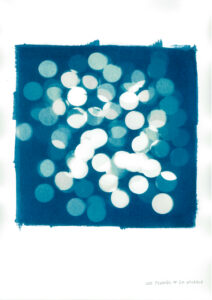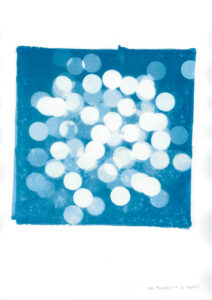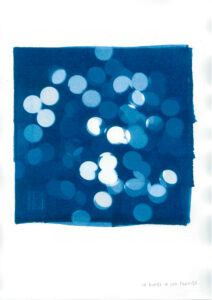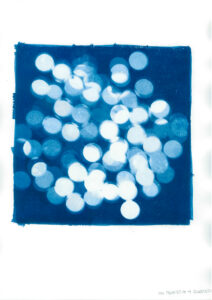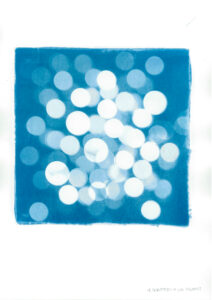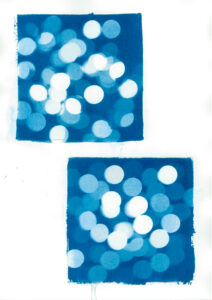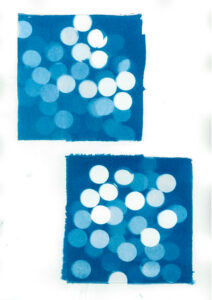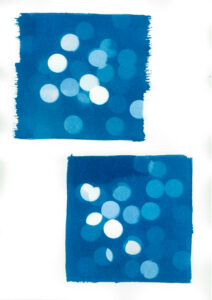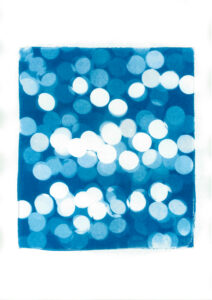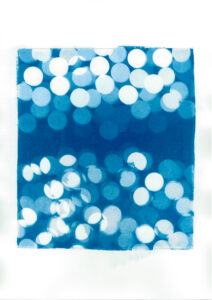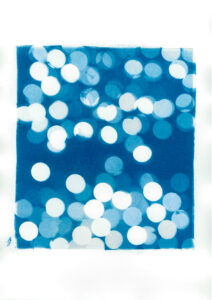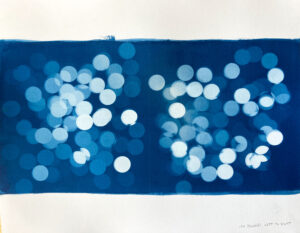This series of cyanotypes was created by systematic variations of processes that involved adding, subtracting, or redistributing coins on the surface of the print during exposure.
I wanted to use the cyanotype as a means of marking time or, more specifically, as a means of recording the temporal unfolding of a process. The series was inspired by the work of Sol Lewitt. The goal, following Lewitt, was to start with a verbal description of a process, and then to explore systematic variations of that process. Here is an example of a process description: “Two 5-inch square cyanotype-treated squares on a sheet of paper. Starting with 80 pennies placed randomly on the top square, transfer one penny every 3 seconds to the bottom square.” When the process is executed, the image that results provides visual documentation of its execution. With cyanotype, the temporal duration of various steps in the process is also recorded due to the time-based nature of the exposure process.
I chose to use coins as the elements on which the processes operated. Using coins to mark time connects to notions of labor and its exchange in the market economy. A practical advantage is that coins are of a standard size and, in this visual sense as well as in the economic sense of being fungible, are interchangeable. The processes I explored also involved exchange, both economic (by convention, one nickel is equivalent in value to five pennies) and physical (swapping out five pennies from the image with one nickel). The fact that these standards are themselves essentially arbitrary gives a sense of playfulness to the extremely literal method with which the processes were executed. Here I was thinking about Duchamp’s 3 Standard Stoppages, after which the current series is titled.
This connects to another connotation of coins, which is the role of chance, as in coin tosses. As in Lewitt’s wall drawings, the verbal description of a process is inevitably incomplete, and as a result the image that it produces will differ from one execution of the process to the next. Following Duchamp, I wanted to more explicitly incorporate randomness into the execution of the process, in this case by tossing or randomly piling coins.
All of the works are on 9 by 12-inch watercolor paper, unless otherwise indicated.
